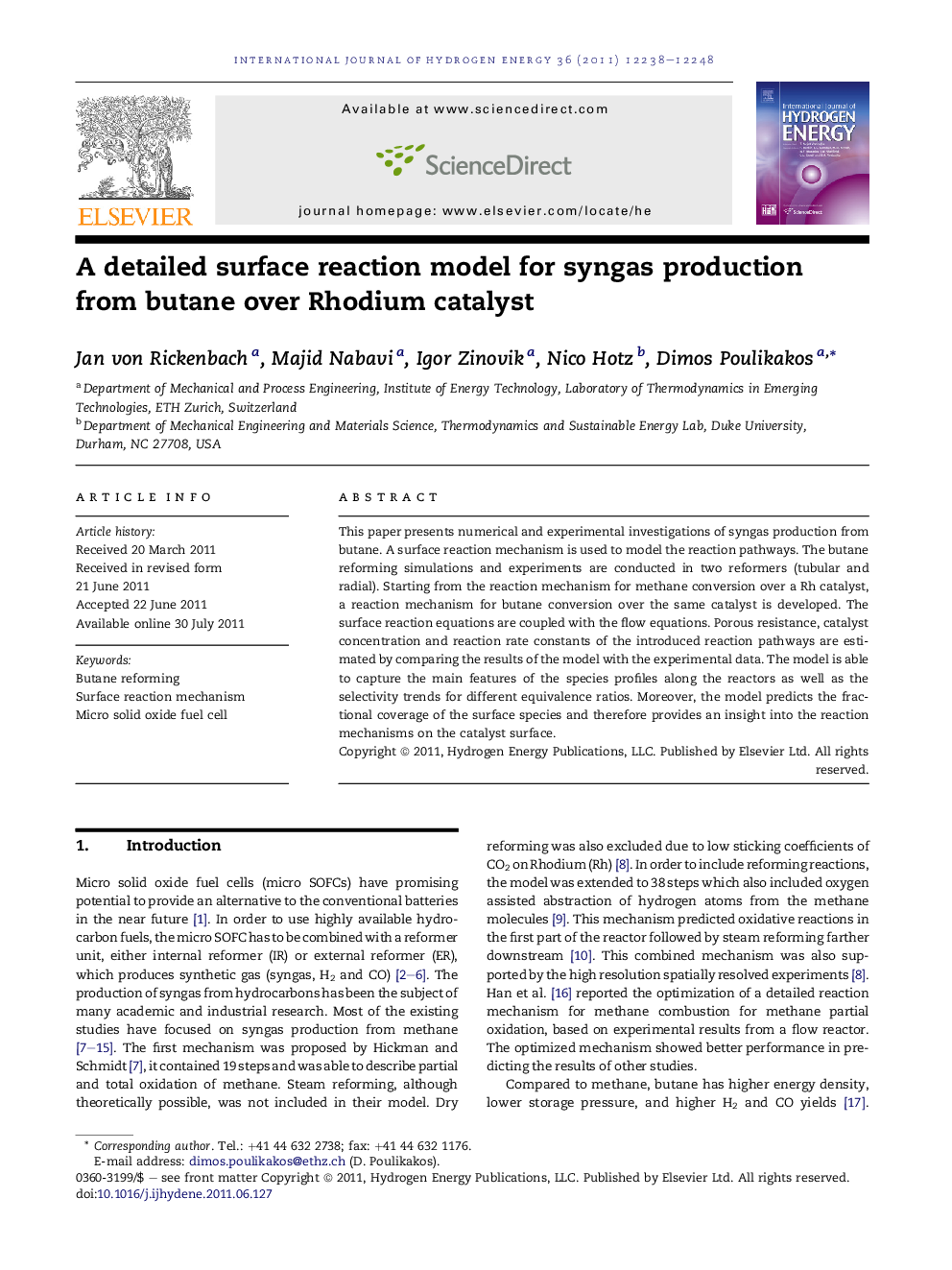| Article ID | Journal | Published Year | Pages | File Type |
|---|---|---|---|---|
| 1282424 | International Journal of Hydrogen Energy | 2011 | 11 Pages |
This paper presents numerical and experimental investigations of syngas production from butane. A surface reaction mechanism is used to model the reaction pathways. The butane reforming simulations and experiments are conducted in two reformers (tubular and radial). Starting from the reaction mechanism for methane conversion over a Rh catalyst, a reaction mechanism for butane conversion over the same catalyst is developed. The surface reaction equations are coupled with the flow equations. Porous resistance, catalyst concentration and reaction rate constants of the introduced reaction pathways are estimated by comparing the results of the model with the experimental data. The model is able to capture the main features of the species profiles along the reactors as well as the selectivity trends for different equivalence ratios. Moreover, the model predicts the fractional coverage of the surface species and therefore provides an insight into the reaction mechanisms on the catalyst surface.
► Three different models are implemented and evaluated for butane reforming. ► The species profiles along both tubular and radial reactors can be captured. ► The validated model can explain kinetics of catalytic reactions of butane reforming. ► The model can predict the fractional coverage of the surface species accurately.
